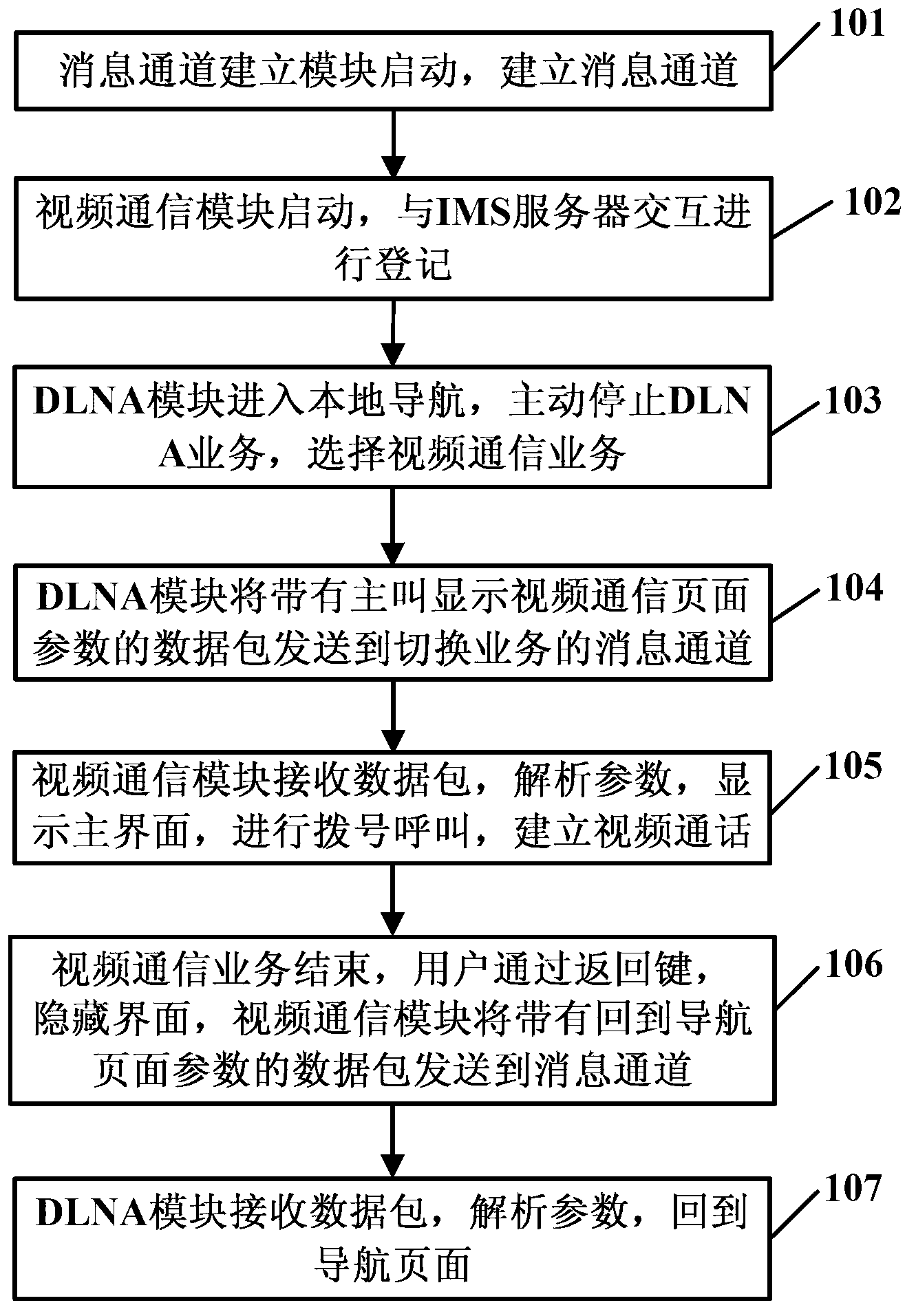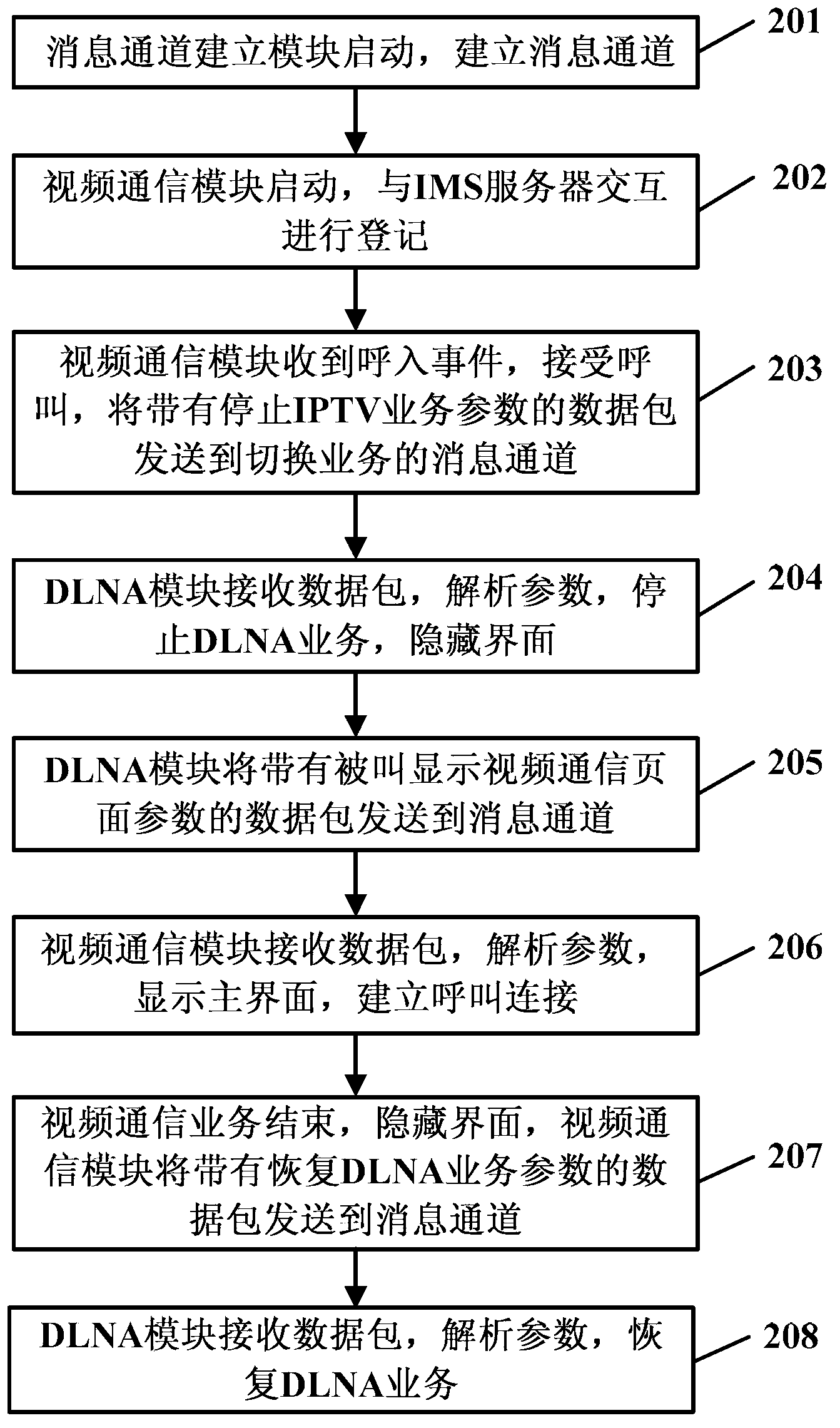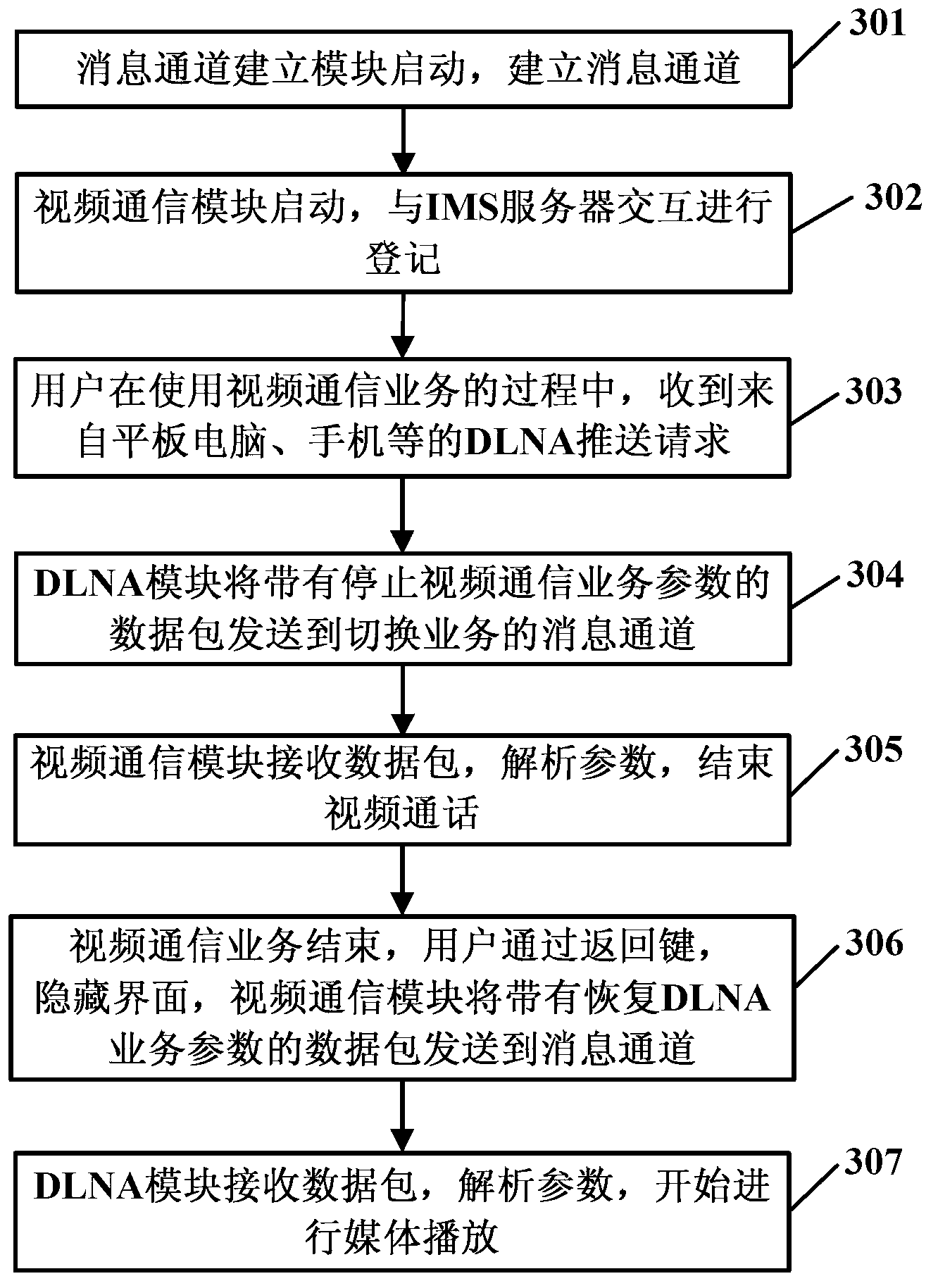Device and method for integration of video communication service and DLNA (Digital Living Network Alliance) service
A technology for video communication and video services, which is applied in the field of devices integrating video communication services and DLNA services, and can solve problems such as the integration of DLNA services
- Summary
- Abstract
- Description
- Claims
- Application Information
AI Technical Summary
Problems solved by technology
Method used
Image
Examples
Embodiment 1
[0108] Embodiment 1, the user calls and establishes a two-way message channel for switching services
[0109] see figure 1 As shown, in the case of a user making a call, the following steps are included:
[0110] Step 101, after the message channel establishment module starts, subclass the Qt communication protocol channel through the QCOP protocol, specify a character string as the name of the message channel in the Qt communication protocol channel, and set up a bidirectional message channel for switching services;
[0111] Step 102, the video communication module starts, and the registration unit in the video communication module interacts with the IMS server to register;
[0112] Step 103, when the user uses the DLNA service, the DLNA module enters the local navigation page through the DLNA user interface, actively stops the DLNA service, and selects the video communication service;
[0113] Step 104, when the DLNA module receives the user's instruction to select the vid...
Embodiment 2
[0117] Embodiment 2, the user is called and establishes two independent one-way message channels for switching services
[0118] see figure 2 As shown, when the user is called, the following steps are included:
[0119]Step 201, after the message channel establishment module starts, subclass the Qt communication protocol channel through the QCOP protocol, specify a character string as the name of the message channel in the Qt communication protocol channel, and establish two independent one-way message channels for switching services;
[0120] Step 202, the video communication module starts, and the registration unit in the video communication module interacts with the IMS server to register;
[0121] Step 203, the video communication module receives the incoming call event request message, sets the incoming call reminder dialog box on the currently used DLNA service interface, if the user chooses to answer, then accepts the call request, the video communication module uses ...
Embodiment 3
[0128] Embodiment 3, the user receives a DLNA push request when performing video communication services, and establishes a two-way message channel for switching services
[0129] see image 3 As shown, when a user receives a DLNA push request when performing a video communication service, the following steps are included:
[0130] Step 301, after the message channel establishment module is started, subclass the Qt communication protocol channel through the QCOP protocol, specify a character string in the Qt communication protocol channel as the name of the message channel, and set up a bidirectional message channel for switching services;
[0131] Step 302, the video communication module starts, and the registration unit in the video communication module interacts with the IMS server to register;
[0132] Step 303, the user receives a DLNA push request from a tablet computer, mobile phone, etc. during the process of using the video communication service;
[0133] Step 304, D...
PUM
 Login to View More
Login to View More Abstract
Description
Claims
Application Information
 Login to View More
Login to View More - R&D
- Intellectual Property
- Life Sciences
- Materials
- Tech Scout
- Unparalleled Data Quality
- Higher Quality Content
- 60% Fewer Hallucinations
Browse by: Latest US Patents, China's latest patents, Technical Efficacy Thesaurus, Application Domain, Technology Topic, Popular Technical Reports.
© 2025 PatSnap. All rights reserved.Legal|Privacy policy|Modern Slavery Act Transparency Statement|Sitemap|About US| Contact US: help@patsnap.com



